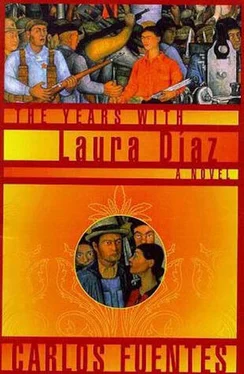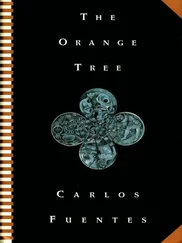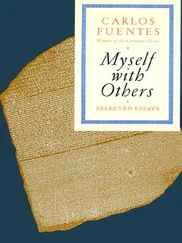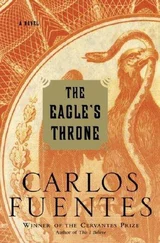All these things the new priest from Puebla proclaimed with an elaborate waving of hands, ridiculous and insolent, as if he wanted to give sculptural form in the air to his categorical prohibitions. The brothels migrated to Santiago Tuxtla, the taverns went to San Andrés, the harpists and guitar players marched to Roca del Rio, and amid the desolation now fallen on the local merchants like a plague, Father Almonte reached the apex of authoritarianism with his techniques in the confessional.
“My child, do you look at yourself nude in the mirror?”
Felipe did not reproach Cosima for her new faith. He simply looked her straight in the eye when she came home from Mass on Sundays, and it was she who for the first time averted her haughty gaze.
“Do you touch yourself in secret, my child?”
Laura looked at herself naked and was not surprised to see what she always saw: she thought the priest might have planted something strange in her body, a flower in her navel or a spider between her legs, like the one her aunts had when they bathed on a deserted beach of the lake, where they never returned once Father Almonte began to cast suspicion everywhere.
“Would you like to see your father’s sexual organ, my child?”
To see if something would happen, Laura repeated in front of the mirror the priest’s strange movements and even more extraordinary words. She also imitated his voice, making it even more bombastic:
“A woman is a temple built over a sewer.”
“Have you ever seen your father naked?”
Laura almost never saw her father, Fernando Díaz, dressed or naked. He was a bookkeeper in a bank, lived in Veracruz with a fifteen-year-old son, the product of an earlier marriage. After his first wife, Elisa Obregón, died in childbirth, Fernando fell in love with the young Leticia Kelsen during a visit to the festivals of Tlacotalpan. Leticia fell in love with this strange bird from the port, who always wore jacket, vest, tie, and tiepin, and whose only concession to the heat was a round straw hat — what the English called a boater, as Aunt Virginia noted, striking a resonant chord in her sister’s Anglophile suitor. The Kelsens, married by mail, did not impede this “love match,” as Mr. Díaz insisted on calling it; he was a man of English readings and influences, which Felipe Kelsen thought was good for helping to erase the German influence. Leticia herself accepted the arrangement of living apart, and when little Laura came into the world, Felipe, now a grandfather, roundly congratulated himself because his daughter and granddaughter lived under his protection in the country and not far away in the noisy port, which was, perhaps, as sinful — he said to Cosima — as some gossiping tongues said it was. She gave him an ironic look. Small towns, big hells.
Fernando Díaz had asked of his new family (Leticia first and then Laura, when she came exactly nine months later) one thing: “I can’t give you what you deserve. Live a good life in Don Felipe’s house. In Catemaco, I’d never be anything but a bookkeeper. In Veracruz, I can rise, and then I’ll have you brought to join me. I don’t want charity from your father or compassion from your sisters. I’m not a hanger-on.”
Discomfort and being hangers-on were, in point of fact, the components of the young couple’s initial situation in the Kelsen house in Catemaco, so everyone breathed a sigh of relief when Fernando Díaz made his decision.
“Why doesn’t your son Santiago ever come to see us?” the maiden aunts asked.
“He’s studying,” Fernando would answer dryly.
Laura Díaz was dying to learn more: how had her parents met, how did they get married, who was the mysterious older half brother who had the right to live with her father at the port? When would they all get together? Was it right that her mother was so hardworking, as if taking care of two houses at the same time, that of her father present here and that of her husband absent there, as if cooking for both those who were there and those who weren’t? … It was true. The solitude of mother and daughter spread more and more to the rest of the house, to the three spinsters, Hilda playing the piano, Virginia writing and reading, María de la O knitting wool shawls for the cold, when the north wind blew …
“We won’t get married, Leticia, until you move in with your husband, as things should be,” Hilda and Virginia would say, almost in a chorus.
“He’s doing it for you and for the girl. It won’t be long now, I’m sure,” María de la O would add.
“Well, he should hurry up, or the three of us will die unmarried,” Virginia, alone, would laugh. “I hope the gentleman, mein Herr, is aware of it!”
But Grandmother Doña Cosima incarnated the true solitude. “I’ve done everything I had to do in life, Felipe. Now respect my silence.”
“And your memories? What about them?”
“Not a one is mine. I share them all with you. All.”
“Don’t worry. I know.”
“Then take good care of them, and don’t ask me for more words. I’ve already given you them all.”
That is what Doña Cosima said in the year 1905, when everything happened.
Witty, wisecracking, and raucous: the people of Catemaco could be all that (when the spirit moved them) and devout, too, as the priest Morales knew very well and the priest Almonte knew not at all. More than the rich and the almost rich, it was the poor, the sowers and reapers, the net weavers, the fishermen, the oarsmen, the bricklayers, and their wives who gave the best offerings in church.
Don Felipe and other coffee growers would give money or sacks of food; the poorest, in secret, would bring jewelry, ancient pieces passed down in their families for centuries and offered to give thanks to the Lord Our God for their own good fortune or someone else’s bad luck, both taken to be miraculous. Onyx necklaces, large silver combs, gold bracelets, unmounted emeralds: luxurious stones retrieved from who knows what hiding place, attic, or cave, from under what mat on which embankment, from what secret mine.
Everything was enthusiastically piled up, because Father Morales was scrupulous about storing away for his flock what rightly belonged to it and would sell a valuable piece in Veracruz only when he knew that the very family who’d piously offered the jewel to the Black Christ of Otatitla  n needed money.
n needed money.
As in all the towns on the Gulf coast, the saints were celebrated in Catemaco with dances held on a wooden floor the better to hear the sound of stamping feet. The air would fill with harps, viols, fiddles, and guitars. It was then it happened — everyone remembers it from the year 1905: on the day of the feast of the Holy Child of Zongolica, Father Elzevir Almonte did not appear. People went looking for him, but neither the priest nor the treasure was to be found. The offering chest was empty and the priest from Puebla gone.
“How right he was when he’d say, ‘Puebla breeding ground of saints; Veracruz fountain of crooks.’”
That was the only comment, ironic and sufficient, made by Don. Felipe Kelsen. The people were harder on him, their mildest epithets being “little bastard” and “thief.” The four Kelsen daughters remained impassive. Life would go back to normal without the robber priest, taverns and whorehouses would operate once again, serenades would be heard on tranquil midnights, those who had gone away would come back. Coincidentally, on that day, the self-absorbed grandmother, Cosima Reiter, began to decline, as if she’d wasted her life in a religion that didn’t deserve her and wasted her love (gossips insisted) on an honorable man instead of a romantic bandit.
“Laura, sweetheart,” she once said when she was already ill, as if she didn’t want the secret to be lost forever, “you should have seen what a handsome man he was, what fire, how bold he was.”
Читать дальше

 n needed money.
n needed money.










